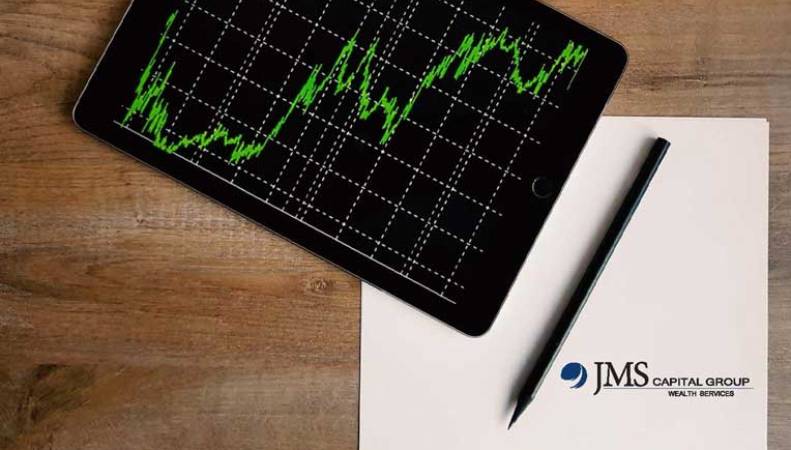By using our website, you agree to the use of cookies as described in our Cookie Policy
Blog
In an Era of Low Returns, Investors Need to Save More
It’s well documented that most Americans have not saved enough for retirement. Consequently, there have been considerable efforts made to persuade workers to maximize their participation in tax‐deferred retirement plans, such as 401(k)s. Structurally, these efforts have involved such incentives as automatic enrollment, employer contribution matching, and automatic escalation of contributions. All of these ideas are terrific, and we encourage you to take full advantage of them, if you have not already done so.
However, in recent years another hidden risk to retirement portfolios has developed—tepid return forecasts. It is not simply that stocks are overvalued by many metrics, and that interest rates are near record lows. If these events were wholly cyclical in nature, with rates rising back to normal levels and equities pursuing a glide path to a more typical CAPE (Cyclically Adjusted Price‐to‐Earnings) ratio, then there would be little cause for concern. But there is significant evidence that the natural rate of interest has declined over recent decades, and that it is unlikely to rebound back to previous levels. Furthermore, real GDP growth rates in developed countries have stagnated over recent decades, with demographic trends suggesting further drops to be possible, if not likely. Simply put, there is ample reason for concern that long‐term returns to the traditional 60/40 US stock/bond portfolio will not be as strong as historical measures suggest.
Long‐term declines in the returns of stocks and bonds are obviously not good for your portfolio. But how bad is it? What do you need to do to compensate? The math would dictate that savings rates would need to rise, but to what degree?
For an answer to this question, we reviewed a study done by AQR’s Antti Ilmanen, Matthew Rauseo, and Liza Truax. They created a model in which a participant accumulated enough wealth to have a retirement income replacement ratio (RR) of 75%. 30% was assumed to come from income sources outside of retirement, such as Social Security or home ownership, which meant that 45% needed to come from the participant’s retirement plan. It was assumed that the participant would work for 40 years, with real wages increasing at a steady rate of 2% per year. The retirement assets would be invested in a 60/40 mix of US stocks and bonds, with annual real returns for the portfolio equal to 5.5%, roughly based on long‐term historical results.
.jpg)
In this base‐case scenario, the participant would need to save 8% annually in order to achieve a 75% RR. This figure is in line with a historical rule of thumb of saving 10% of income each year.
But what if returns in the future do not match those in the past? How much more would one need to save? The hope would be that minor savings adjustments would be sufficient to re‐enable achievement of a 75% RR. But will the numbers cooperate?
Alas, the answer is no. AQR ran their analysis under various return expectations; a modest 2% drop in real expected returns—from 5.5% to 3.5%—meant that the participant’s savings rate needed to rise from 8% to 15% in order to still attain a 75% RR. The intuition behind this result is that the exponential growth of compounding investment returns across 40 years had a greater impact than the savings rate itself, so that small changes in returns required much larger ones in savings rates.
So what’s the bottom line here? We want to leave you three takeaways for a probable “new normal” world, with slower growth and more modest returns:
- Don’t panic! This isn’t a call to get out of equities—though we believe US equities are overvalued, we are still in them (albeit underweighted), and many global equities, such as emerging markets, are among the most promising opportunities in the investing world. While we harbor concerns about a market correction, we do not pretend to have the crystal ball that foretells the timing of such an event.
- Seek wealth preservation within a long‐term approach — At JMS, we construct portfolios that seek to provide upside participation with downside protection. The upside comes primarily from a broad portfolio of domestic and international stocks, with bonds providing income and diversification. The downside protection comes from our alternative sleeve, which seeks to blend modest upside participation with the pursuit of alpha in ways largely uncorrelated to the rest of your portfolio. If markets really are entering a new era of limited returns, it will be critical to avoid large downturns, as recovery may proceed more sluggishly than in years past. The idea is to make more by losing less through improving a portfolio’s updown capture ratio.
- Come see us! We’re friendly—most of us, anyway. The appropriate course of action will depend on your circumstances‐‐this is why we do our due diligence upfront and on an ongoing basis conduct periodic client reviews, and have done so for 20 years. For some, adjusting expectations and moderating retirement spending may be sufficient. For others, saving more and delaying retirement may be the best option. In fact, the only bad plan is not having any plan at all. We can work with you to plot out your best course of action. So let’s get started!
- JMS Team
Disclosure:
This material is not intended as an offer or solicitation for the purchase or sale of any financial instrument or investment strategy. This material has been prepared for informational purposes only. References to future returns are not promises or even estimates of actual returns a client portfolio may achieve. Any forecasts contained herein are for illustrative purposes only and are not to be relied upon as advice or interpreted as a recommendation for a specific investment. Past performance is not a guarantee of future results.
‹ Back








